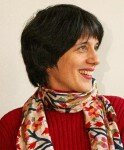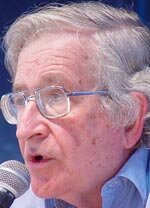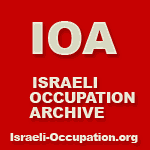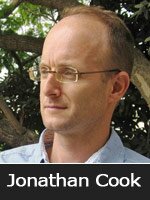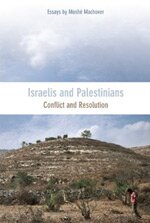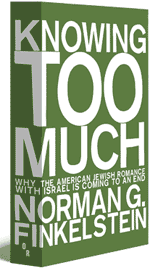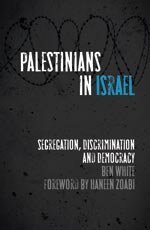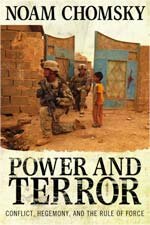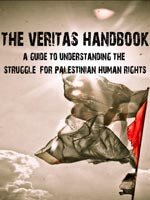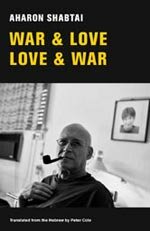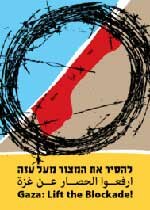By Nancy Kricorian, The Palestine Festival of Literature – 12 May 2010
www.palfest.org/authorsblog.html
Hebron/ Bethlehem Checkpoint /Ramallah
Wednesday [5 May 2010] was a tough day.
Our first event was at Al Khalil/Hebron University, where our host pointedly announced from the podium, “We are not a free people.” After the plenary, Rachel and I headed to our workshop entitled “The Media’s Role in Creating Political Realities.” The classroom was filled with journalism students, the majority of them young women in headscarves, and two of their instructors. Rachel started by asking the students to define the word “media,” and I then used a specific campaign to illustrate “finding a hook” in order to attract attention for a story.
The discussion that followed quickly grew heated. The students were angry about the Western media’s bias in reporting the Palestinian situation. There was a lot of outrage in the room, and unlike many of our other interactions, I’m not sure we added, or received, many rays of sunshine.
Next we toured the Old City with the public relations director of the Hebron Rehabilitation Committee, which has restored many buildings in the Old City and placed Palestinian families in them as a way to hold back the encroaching settlements. The volunteer families have to live cheek-by-jowl with the most extreme of the Jewish settlers. We visited a small row of Palestinian shops just past an Israeli checkpoint facing a settlement. We bought ceramics, bead bracelets, and embroidered scarves and hats while the settlers eyed us from across the road. The dry wit of our English writers definitely helped cut the tension: Adam made note of the settlers’ “Biblical hippie” style. “They look like they need a good scrubbing, those boys do,” Sheila added.
We were running late, but our guide had made an appointment for us at the local kheffiyeh factory, whose owner was awaiting our arrival. We were going, no we didn’t have the time, and finally, okay we could stop for five minutes, which of course turned into a half hour. We entered the small ground-floor factory to the deafening clatter of the weaving machines. What kept us longer than intended was the difficulty of making a selection from the dizzying array of colors piled up on the shelves of the storeroom. Our group swarmed and buzzed over the goods. The designs were beautiful, and the kheffiyehs affordable as well as easily transportable.
For a moment we felt like proper tourists—it was nice to shop without having what felt like bigots who suffered from borderline personality disorder watching your every move.
From the factory we boarded the bus towards round two at Bethlehem Checkpoint, with its watchtowers, barbed wire, and concrete barriers. A professor at Bethlehem University told me they refer to the checkpoint as “Lambs to the Slaughter,” and as I made my way through the metal chute towards the narrow turnstile, I did feel like a variety of livestock. In addition, the disembodied, garbled soldiers’ voices barking through loudspeakers gave the whole thing the aura of a dystopian science fiction novel. The Palestinian father in front of me was waiting poised for the green light to flash at the top of the turnstile. He held a two-year-old in one arm as a four-year-old stood clutching the father’s pant leg. The trick, you see, was for all three of them to make it into the contraption together—or else risk possibly hours of separation. I calculated the space available and decided it was possible, although barely. The green light finally lit up and the three of them pushed through.
After arriving at the hotel in Ramallah, I headed to the Khalil Sakakkini Center with a few others who were scheduled to “perform” that night. The outdoor garden of the restored mansion was another dramatic venue—like the Turkish bath and the Ottoman castle in Nablus earlier in the week—and the inspiring video message from Arundhati Roy was followed by readings that ranged from the comic to the tragic. My contribution was on the darker end of the spectrum, in keeping, I suppose, with the dark mood I felt that afternoon. Nothing like imaginatively recreating the Armenian Genocide after a long day in Hebron.
The evening ended with a dinner where I found myself being interviewed by New York Times reporter Ethan Bronner, whose articles I tend to read with skepticism—his son is currently serving in the Israel Defense Forces, and he often can slant his facts to a fairly doctrinaire Israeli point-of-view. But I was happy to honestly share my experiences with him. He was writing about the two literary festivals—The International Festival of Writers of Israel in West Jerusalem and PalFest in East Jerusalem and across the West Bank—that were happening simultaneously.
When I saw the piece the next day, I was surprised by its frank assessment of the occupation and the way PalFest voices framed the discussion.
I guess you know you’ve had a tough day when the New York Times coverage may well be the best part of it. But tough days can sometimes be the most productive: I hope at least one of the students I so briefly interacted with in Hebron went to sleep that night, not less angry, but less despairing. I myself ended that day angry, exhausted and yet poised for action.
Nancy Kricorian is an author and a Code Pink activist
ALSO: New York Times’ Ethan Broner: Israelis and Palestinians Hail Writers and the Word, Just Not With One Another
